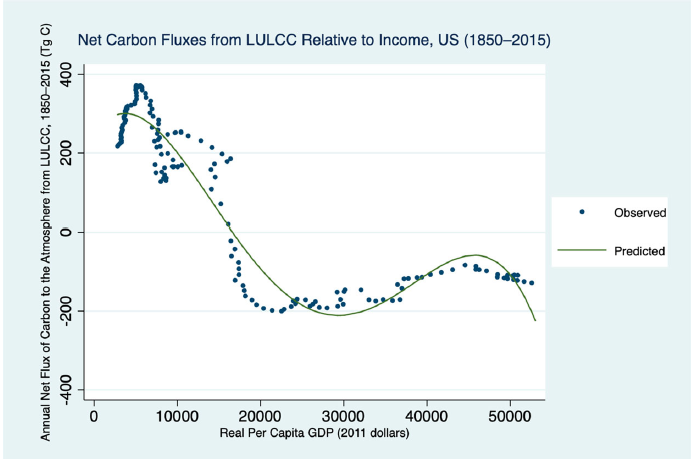In the Journal of Environmental Economics and Policy, Aug. 2020: “Carbon Flux and N- and M-Shaped Environmental Kuznets Curves: Evidence from International Land Use Change.” https://doi.org/10.1080/21606544.2020.1809527

From the abstract:
Economic growth can affect land use change to release or sequester carbon, intensifying or mitigating the impact of other carbon emissions, and the functional form of that relationship is important to crafting policy responses. Data on land use and land cover change (LULCC) for 14 countries reveal an N – or M-shaped environmental Kuznets curve (EKC) for LULCC carbon flux to/from the atmosphere in some nations, while others display very different relationships. Most nations studied show some variation of the inverted-U EKC. All but one nation display initial turning points ranging from $2,000 to $9,000 per capita GDP (2011 dollars), and half are now net negative carbon emitters with respect to LULCC. For the US, regression analysis of the LULCC EKC indicates a roughly M-shaped quartic EKC function, with local maxima at about $3,700 and $45,700 and a local minimum at about $29,400. Where N-shaped EKCs are observed, the carbon sequestration from increasing forest regrowth is transient, and may be followed by a phase in which rising aggregate emissions dominate slowing sequestration in maturing forests. An M-shaped EKC indicates a third turning point, representing a return to increased net carbon absorption.
